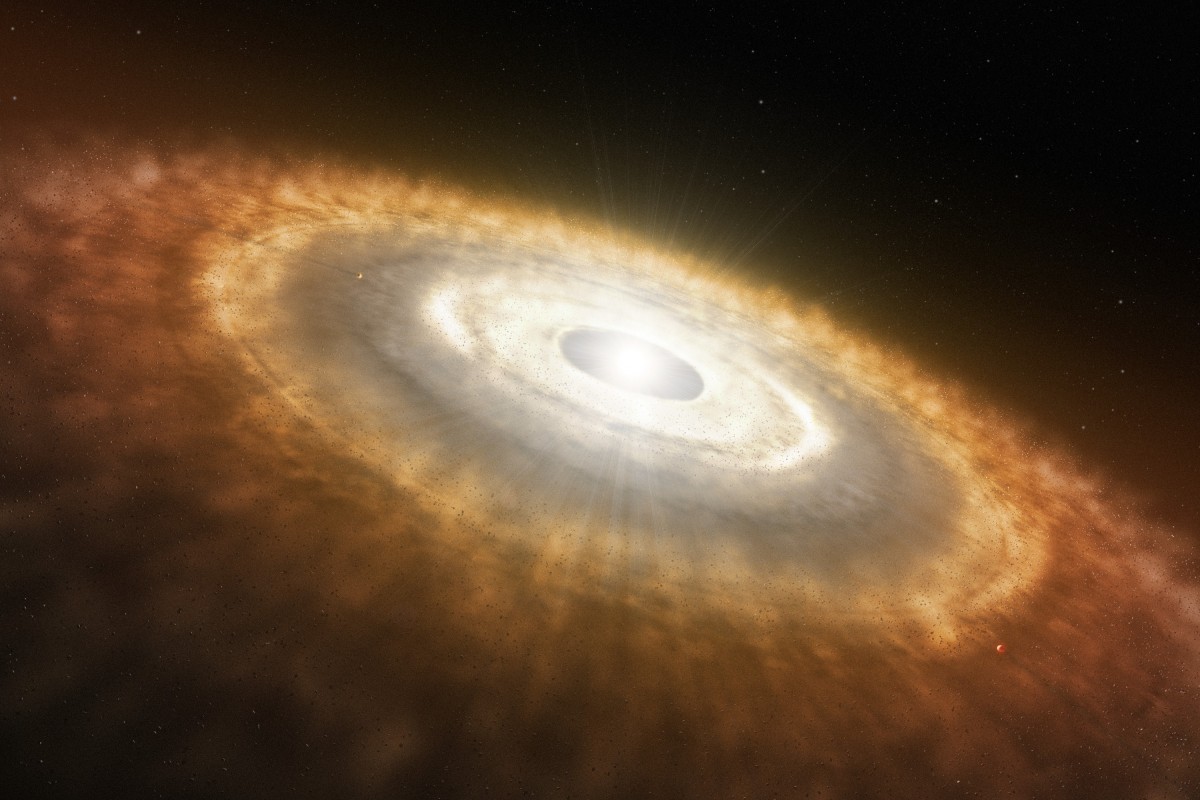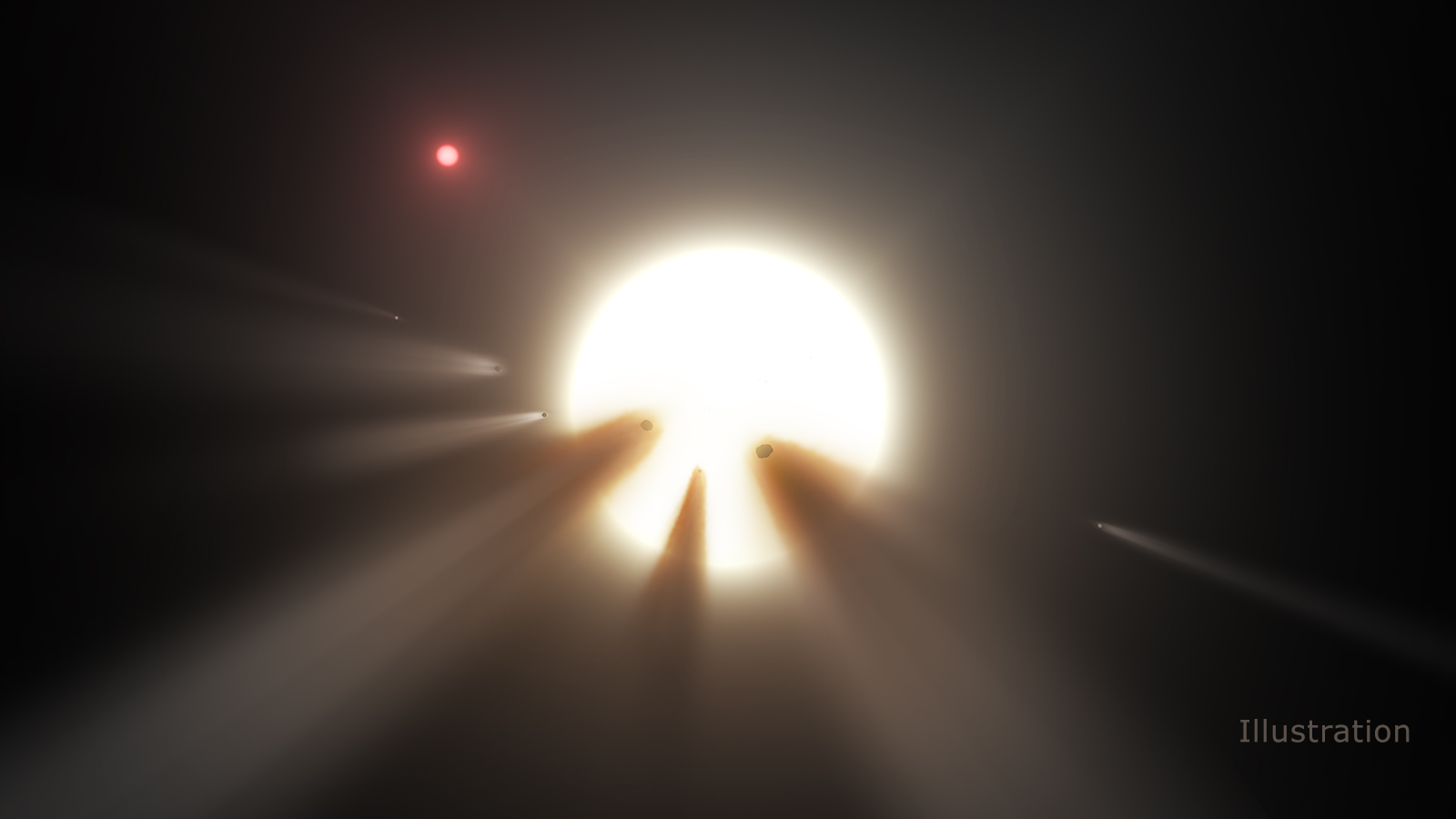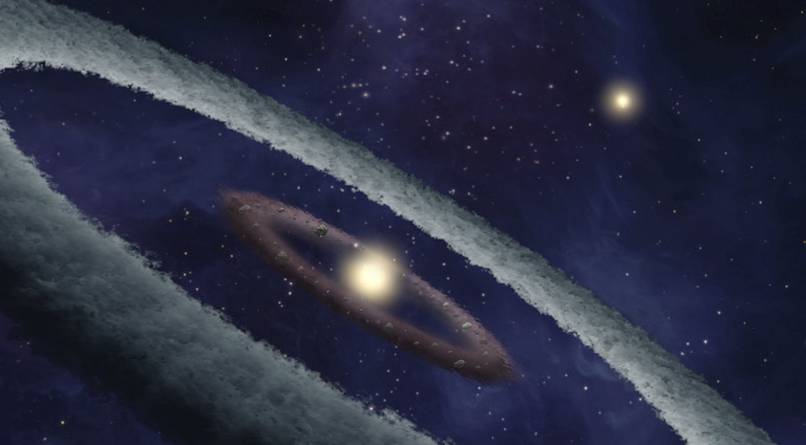Astronomers proposed a new explanation for the dynamics of the luminosity of stars with the "Dyson sphere"

Last October, the star KIC 8462852 was discovered, which is located at a distance of 1,480 light years from Earth. The peculiarity of this object in the uneven and very rapid change in luminosity. Astronomers who discovered the star, considered that such luminosity dynamics can be explained by the presence of some objects in orbit KIC 8462852. It was suggested that this star may be in the Dyson sphere .
Now a similar luminosity dynamics has been noticed in one more star, EPIC 204278916. The diameter of this object is equal to the diameter of the Sun. But the mass of the star, according to experts, is half the mass of our star. The star EPIC 204278916 was discovered in 2014 with the Kepler telescope. Since then, an entire team of astronomers, led by Simone Scaringi from the Institute for Extraterrestrial Physics of the Max Planck Society (Germany), has been investigating the luminosity of this star. This characteristic is even more unusual than in the case of the star KIC 8462852.
The results of the study indicated that for 78.8 days of observation of the star an irregular change in its luminosity was detected. Over a period of 25 days, its luminosity changed by 65%. Scientists say that if a planet passes through a star's disk, then for a remote observer the brightness of this star changes by only 1%. In order for the luminosity to change by 65% in a short period of time, something very large or many small objects must pass through the star's disk.
')

Recently, an interesting explanation has been proposed for a change in the dynamics of a star's brightness without mentioning objects passing over a disk. Perhaps the reason is the rotational speed of KIC 8462852. Scientists suggest that the star rotates so fast that it is flattened at the poles. The radius at the equator here is greater than the radius at the poles. And the temperature of the star at the poles is higher than at the equator. Well, it reduces the overall brightness of the star at the equator. The temperature dynamics of the equator and the pluses are not constant; therefore, scientists observe periodic irregular changes in the luminosity of an object.
Before that there was another explanation. A number of scientists have suggested that swarms of comets scamper around the star, which affect the luminosity of KIC 8462852. But Bradley Schaefer (Bradley Schaefer) refuted this assumption. He investigated the luminosity of a star over a period of time from 1890 to 1989, analyzing scans of historical photographs of a portion of the sky with a strange star. As it turned out, in just one hundred years, the luminosity of KIC 8462852 fell by 20%. In order to produce such an effect, at least 64,800 comets, each with a diameter of 200 km, must pass over the star's disk at a time. The probability of the existence of such a swarm of comets is too small.
Astronomers studying the star EPIC 204278916 made another assumption. They say that this star may be located in the center of the dust-gas protoplanetary cloud. This cloud is oriented by the edge of the disk to Earth. And this can already explain the observed changes in brightness. The presence and orientation in space of such a cloud also explains that the scientists of the Earth, due to the position of the protoplanetary cloud, cannot observe a star in the infrared range. If the cloud is located in such a way that from Earth the central star can be observed only through the end of the cloud, then astronomers cannot see the inner radiating regions. Thus, direct observation is very difficult .

Dyson's sphere as a man-made structure is a sign of a developed extraterrestrial civilization that collects the energy of a whole star.
This hypothesis has the right to exist, since the star EPIC 204278916 is young - it is not more than 11 million years old. Our Sun, for example, is already 4.5 billion years old. So a protoplanetary cloud from which planets have not yet formed may well be in this system.
“Many disks (of protoplanetary clouds) are quite thin, and we observed them from different angles, which allowed us to see the star. But here the position of the disk is such that the infrared radiation of a star is invisible to us, ” says one of the participants in the study.

This hypothesis is also quite suitable for explaining what is happening with the star KIC 8462852. Its age is also not very large and has a few hundred million years. A number of astronomers believe that in fact the age of this star is much less, and KIC 8462852 is younger than EPIC 204278916. Even if these stars do not have protoplanetary clouds, they may have circumstellar "garbage" where objects similar in characteristics to comets of the Solar System are located . These objects also form a disk-shaped cluster. And in the case of the star KIC 8462852, the disk can be turned with its edge to the Earth.
“If it turns out that KIC 8462852 is younger than it is thought of (many astronomers believe it is), and if a star has a protoplanetary cloud or comet-like objects, then this may explain what is happening. We may have opened a new stage in the early evolution of stars! ”, Says Ethan Siegel.
German scientists have yet to prove their point of view. The preprint of the article has already been published on arXiv.org. The confirmation or refutation of the above hypothesis may appear soon. Next year, the Kepler telescope will be used to study the star EPIC 204278916. As for KIC 8462852, this star is studied throughout the year using the Las Cumbres Observatory Global Telescope Network .
Source: https://habr.com/ru/post/397347/
All Articles